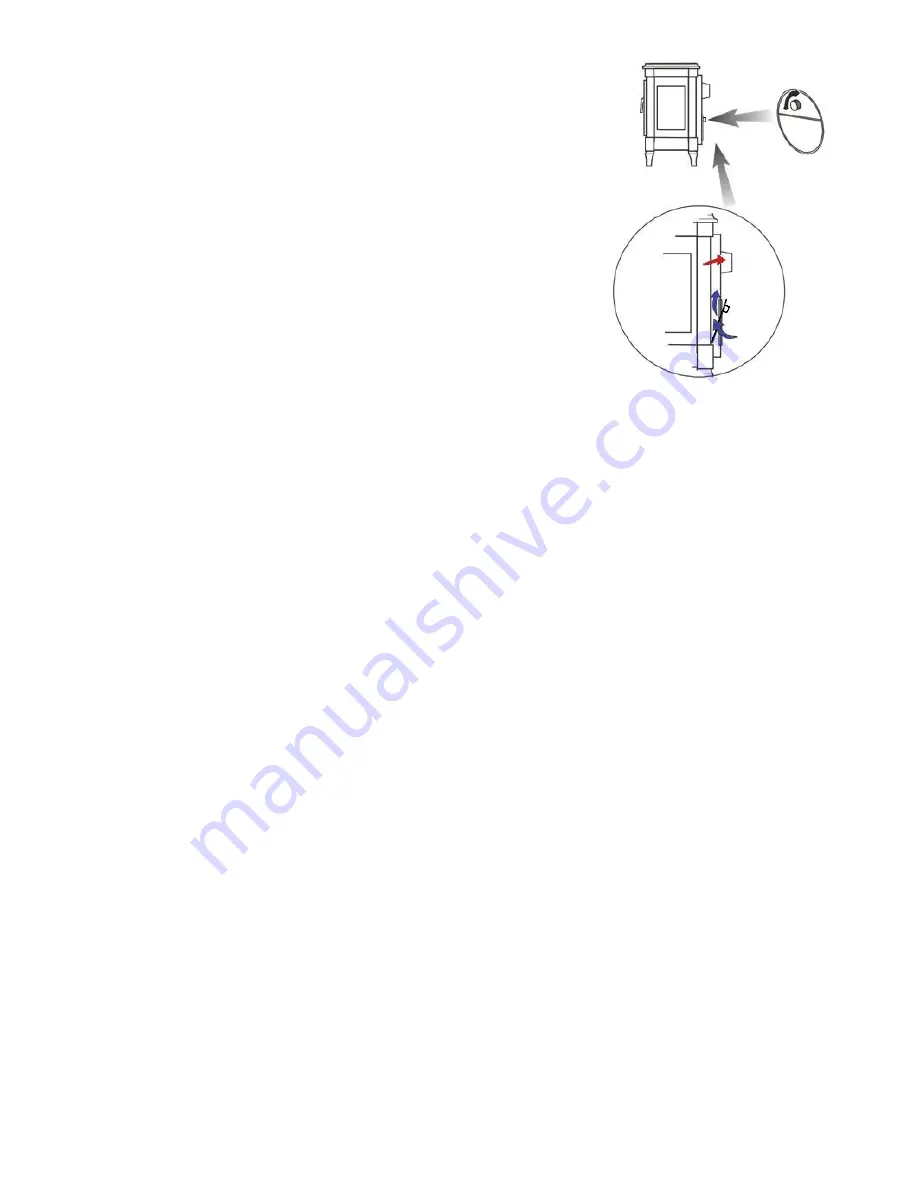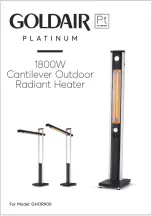
Draught Stabiliser
The flue stabiliser works by opening to provide an additional air supply to the flue
whenever the flu
e’s
negative pressure reaches its upper limit and so checks any
rise beyond this limit to maintain the correct negative pressure within the stove.
This system of flue control is universally accepted as both effective and reliable.
Excessive negative pressure at low fire (No1)
Soot build up (for example overnight).
Soft and hard carbon build up within burner.
Damage to catalyser.
Damage to ignition system.
Smell of oil vapour from overheated oil supply components.
Low negative pressure at low fire (setting No1)
Vaporisation slow at lighting resulting in sooty glass.
Soft carbon build up within burner.
Excessive chimney draught at high settings
Poor flame effect.
Noisy operation.
Damage to catalyser.
Damage to ignition system.
Hard carbon build up within burner.
Lack of heat from the stove.
Poor chimney draught at high settings
Sooty interior.
Carbon build up within burner.
Lack of heat from the stove.
Pre-Commissioning Checks
Commissioning should not be undertaken if the wind is abnormally high or blustery, nor should it be undertaken by
anyone without suitable experience, testing equipment and working knowledge of the relevant standards and
regulations.
The customers who will operate the stove are an essential component of any installation. Ensuring they understand
the operation of the stove, its controls and what to expect from the installation, whether simple or complex, is
probably the most important single aspect of commissioning. Someone who understands never queries a satisfactory
stove but will tell you when something actually is wrong.
The installation should be inspected to ensure the work is complete and the workmanship satisfactory. The
commissioning engineer may be held responsible for any faults with the installation that would have been apparent
at the time of commissioning. No stove should be signed as commissioned if any part of the installation does not
comply with the relevant standards and regulations or requirements of these instructions.
The oil tank should be examined to confirm there is a supply of the correct grade of oil, that a filter and working
isolation valve are fitted. Having verified that the oil pipe work to the stove is complete and that the fire valve is
opened, the tank isolation valve should be opened and the pipe work inspected for leaks. The pipe into the inlet of the
metering valve should be uncoupled, and a minimum of one litre of oil collected into a suitable receptacle. If dirt,
water or air bubbles are present in this sample additional oil should be allowed through the pipe work until it is free
from contaminates. The fuel pipe work should be reassembled.













































